How to Enjoy New Year’s in Japan
Ah, the New Year’s holiday season in Japan—a time when ancient traditions seamlessly blend with modern festivities, creating a unique and enchanting experience. If you’re lucky enough to find yourself in the Land of the Rising Sun as the calendar turns, get ready for a celebration like no other. Here’s your insider’s guide to savoring every moment of this magical season.
Countdown to Joy: Temple Bells and Shrine Visits
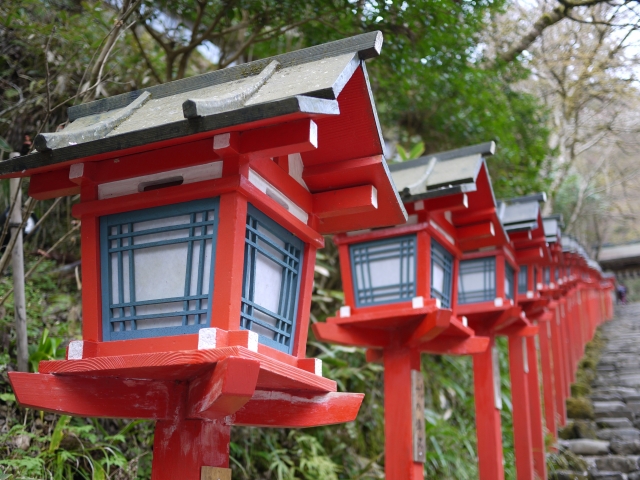
Photo by マキマキカンパニー
As the year comes to a close, Japan prepares for a grand countdown. Instead of raucous parties and fireworks, the Japanese welcome the New Year with the solemn tolling of temple bells. Join the locals in a spiritual journey by visiting a nearby Buddhist temple or Shinto shrine on New Year’s Eve. The resonating sounds of the bells (108 times, to be precise) are said to cleanse the soul, leaving you ready to embrace the possibilities of the coming year.
Omikuji Wishes: Fortune in Your Hands
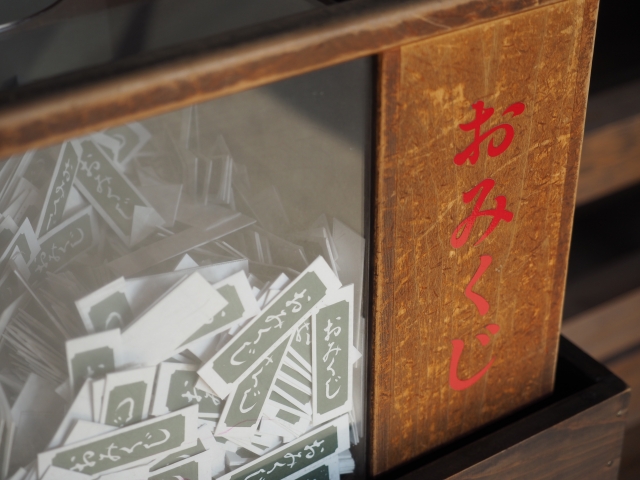
Photo by きなこもち
Ever wondered what the future holds for you? Get your answers with the age-old tradition of omikuji. At shrines, you can purchase a small, paper fortune that unveils your destiny for the upcoming year. Whether it’s great fortune, regular fortune, or even misfortune, don’t fret— simply tie the paper to a designated rack and leave the outcome in the hands of the divine.
First Sunrise: Greet the Future with Awe

Photo by gakkiy
Start the New Year on a high—literally. Many Japanese venture to the coast to witness the first sunrise, or “hatsuhinode.” It’s a breathtaking spectacle symbolizing hope and renewal. Pack a thermos of hot tea, find a cozy spot, and watch as the sky transforms into a canvas of vivid colors. Trust me, it’s a memory you’ll carry with you into the future.
Osechi-Ryori: Culinary Artistry on Your Plate
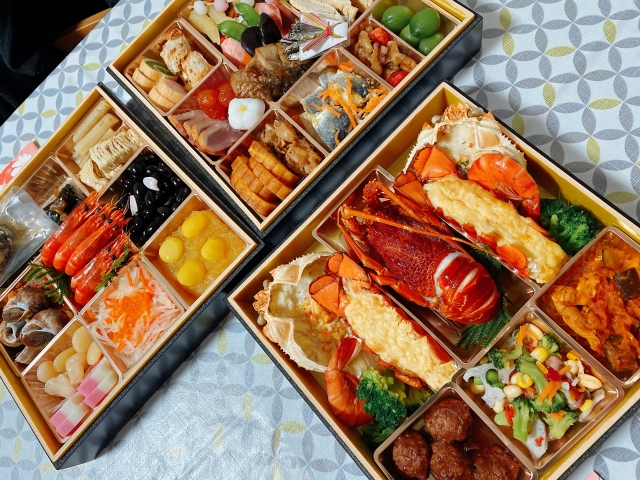
Photo by てらぽん
New Year’s in Japan is incomplete without a feast of osechi-ryori, a collection of traditional foods packed with symbolic meanings. Each dish represents a wish for health, happiness, and prosperity. From sweet black beans to beautifully layered bento boxes, savor the flavors of this culinary artistry. Don’t forget to try ozoni, a traditional soup that varies in preparation from region to region.
Hatsumode: First Shrine Visit of the Year
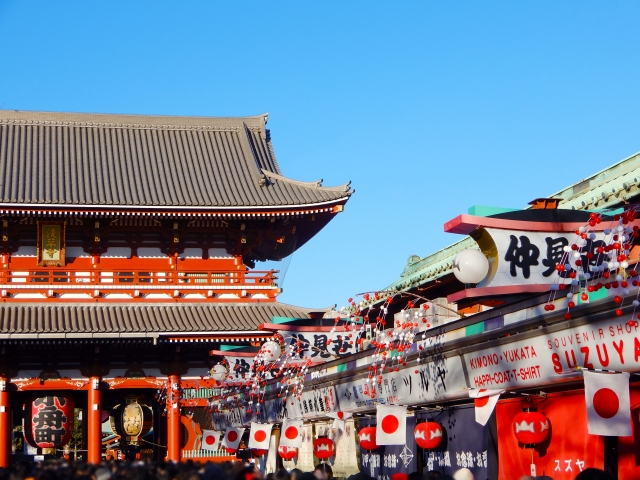
Photo by FreeBackPhoto
After indulging in the festivities, kickstart your New Year with a hatsumode, the first shrine visit of the year. Join the cheerful crowd as they make their wishes for the coming months. It’s a lively atmosphere filled with laughter, joy, and the sweet scent of incense. Embrace the positive energy and make your own heartfelt wishes as you explore the beautifully adorned shrines.
Fukubukuro: Bag of Surprises
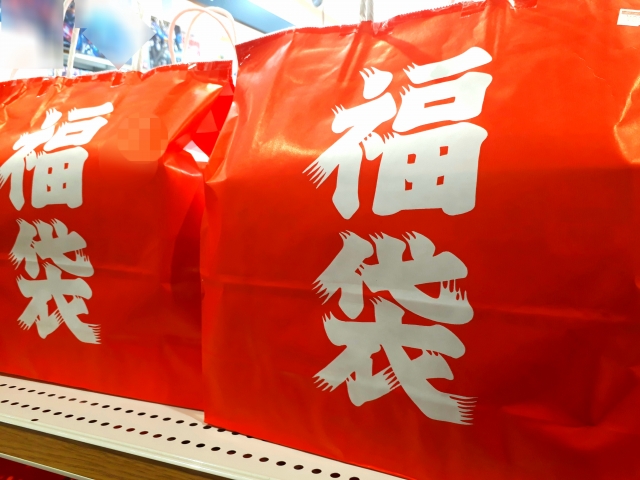
Photo by Hinamalu
Ready to kick off the year with some good luck and great bargains? Dive into the tradition of fukubukuro, or “lucky bags.” Many stores offer mystery bags filled with discounted items, and part of the excitement lies in not knowing exactly what you’ll get. It’s a shopping adventure that adds a touch of thrill to the New Year sales.
In Japan, the New Year’s holiday season is more than just a date on the calendar—it’s a cultural experience that engages all the senses. So, as you embark on this enchanting journey, let the ancient traditions guide you and the modern celebrations dazzle you. May your New Year be filled with joy, prosperity, and the magic of Japan’s unique festivities!
Photo Credits:
Additional photos by マキマキカンパニー きなこもち gakkiy てらぽん FreeBackPhoto and Hinamalu
All other content (text) created by the original author and © 2023 MUSUBI by Borderlink
Top Photo: happyfoot on PhotoAC

Photo Credit: Jenna Kaita
If there’s one thing I’ve learned while being here in Japan, it’s that everyone loves Hawaii. Mentioning my hometown has always been a great way to make conversation, instantly connect with people, and make lots of friends (who always insist on stowing away in my luggage the next time I go home). Still, I can’t help but get homesick for the islands sometimes. But whenever I do, I always go to Kona’s Coffee to satisfy my cravings for Hawaii-style food.

Photo Credit: コナズ珈琲姫路 via Google Maps
About Kona’s Coffee!
Kona’s Coffee is a Hawaiian pancake café that serves pancakes, popular Hawaii dishes, and coffee! It has a cute, island vibe that you can see in many brunch places in Hawaii and some Hawaii inspired décor as well. The outside is decorated with palm trees, a little garden lined with lava rocks, and some surfboards. Plus, there’s even a cute bench to take pictures in front of at the Himeji location!
But let’s talk about the most important thing—the food!!
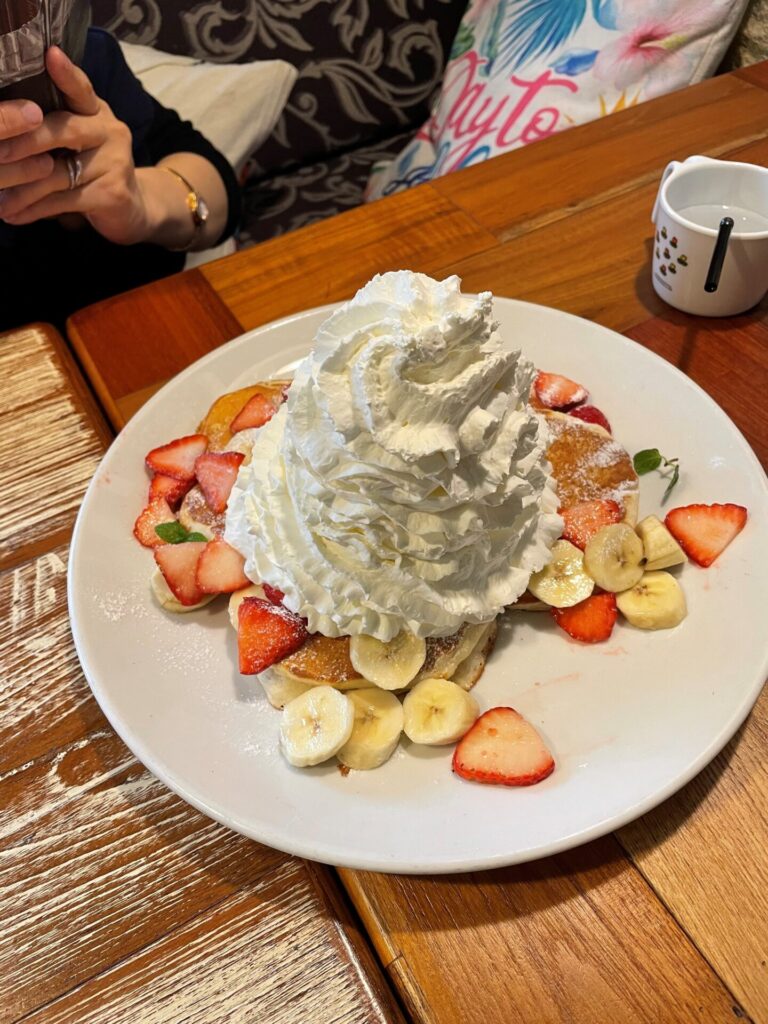
Photo Credit: Jenna Kaita
Pancakes!
They have a wide variety of pancakes to try including their special coffee flavored Kona Farm Pancakes, Tiramisu pancakes, and a customizable pancake option as well. All of these come with a mountain of whipped cream and are so incredibly delicious. If you want to try their pancakes, I highly recommend that you come with a friend unless you have a really, really sweet tooth because the pancakes are definitely on the fluffier side and they give you a rather generous portion. However, any of these sweet treats will pair nicely with a cup of coffee that they grind in house!
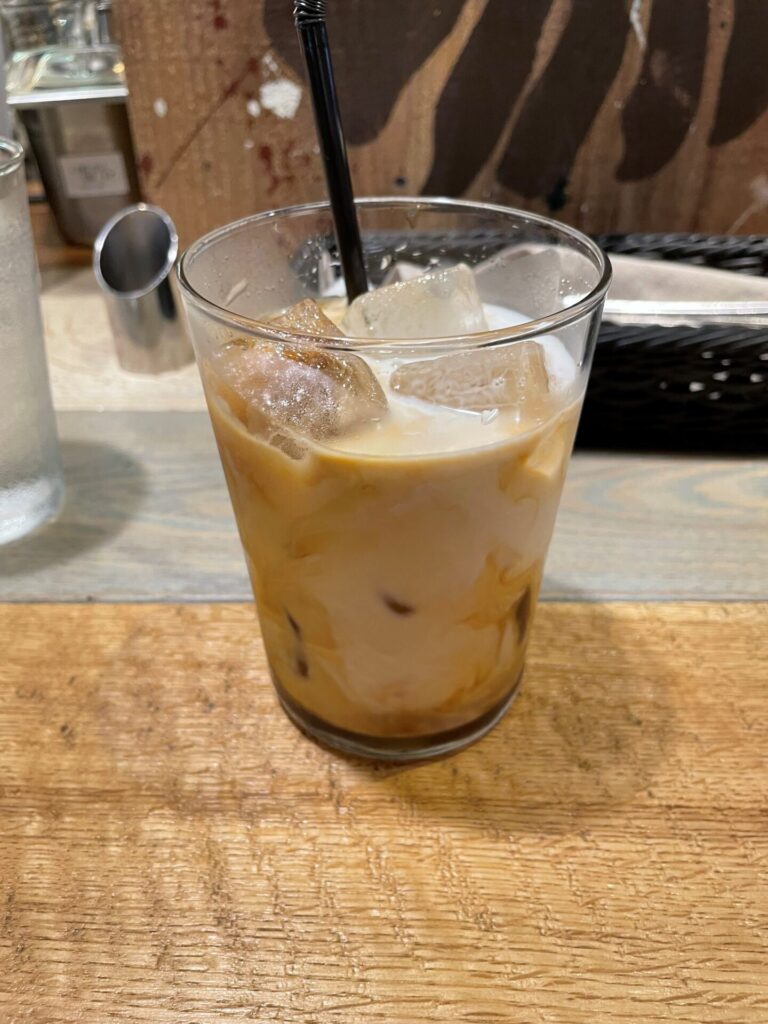
Photo Credit: Jenna Kaita
Coffee!
The coffee is so amazing here and genuinely tastes like home! The Kona Coffee beans are freshly roasted and ground at each location. You can choose the way you want your coffee brewed (hand drip, French press) and they make it to order. My recommendation is the Kona’sアレ (Kona’s Café Au Lait) that has Kona Coffee and milk! The milk comes on the side, so you can pour in as much as you like. I like to make cute swirling patterns in my cup, but my success varies (haha).
Main Dishes!
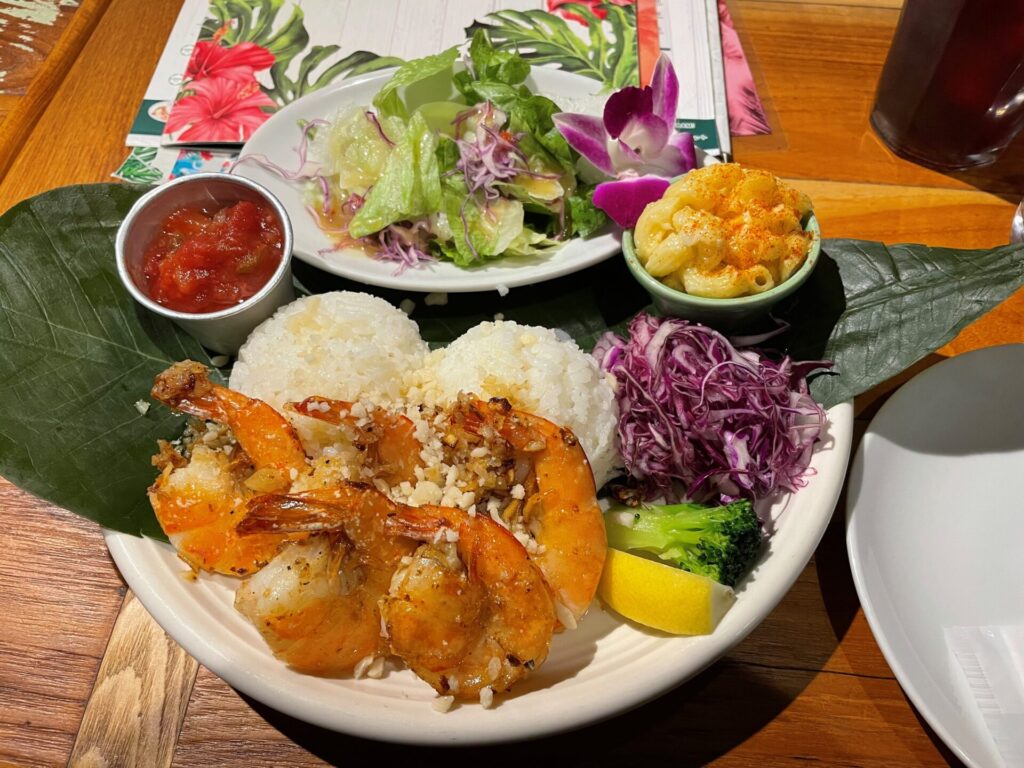
Photo Credit: Jenna Kaita
Kona’s main dishes are the real reason I keep coming back here. While you can never beat food on the islands, these dishes come pretty close. Some of their main dish local classics include Loco Moco, Mochiko Chicken, and of course, Garlic Grilled Shrimp Plates. There are some other items like burgers and eggs benedict that are just as tasty as well. If you do go, I highly recommend the Garlic Grilled Shrimp or the Mochiko Chicken. Sometimes, the advertised mochiko chicken in Japan is just karaage with a different name, but Kona’s mochiko chicken feels the closest to the one I know (so far).
Getting There (Locations)!
Luckily, there are a lot of Kona’s Coffee locations around Japan. On their website, they have locations across 22 prefectures, so you can find this restaurant in Tokyo, Osaka, Kumamoto, and even Okinawa! My usual location is the one in Iwabata-cho, Himeji and it’s about a 10 minute drive or a 13 minute bus ride from Himeji Station (or a 36 minute walk for the truly determined). Also, I recommend making a reservation in advance as it gets really busy on weekends during brunch hours.
Well, what are you waiting for?
For the Hawaii locals and lovers of traditional Hawaiian food, you won’t be able to find items like lau lau or lomi lomi salmon here, but you can still get some pretty “ono grindz” (that’s Hawaiian slang for really delicious food) here and feel like you’re in a nice café on the islands. Also, if you really feel homesick or want some Hawaii goods, there’s a little corner right by the cashier where they sell T-shirts, coffee, and some Hawaiian gecko dolls (I’ve definitely picked up a few)!
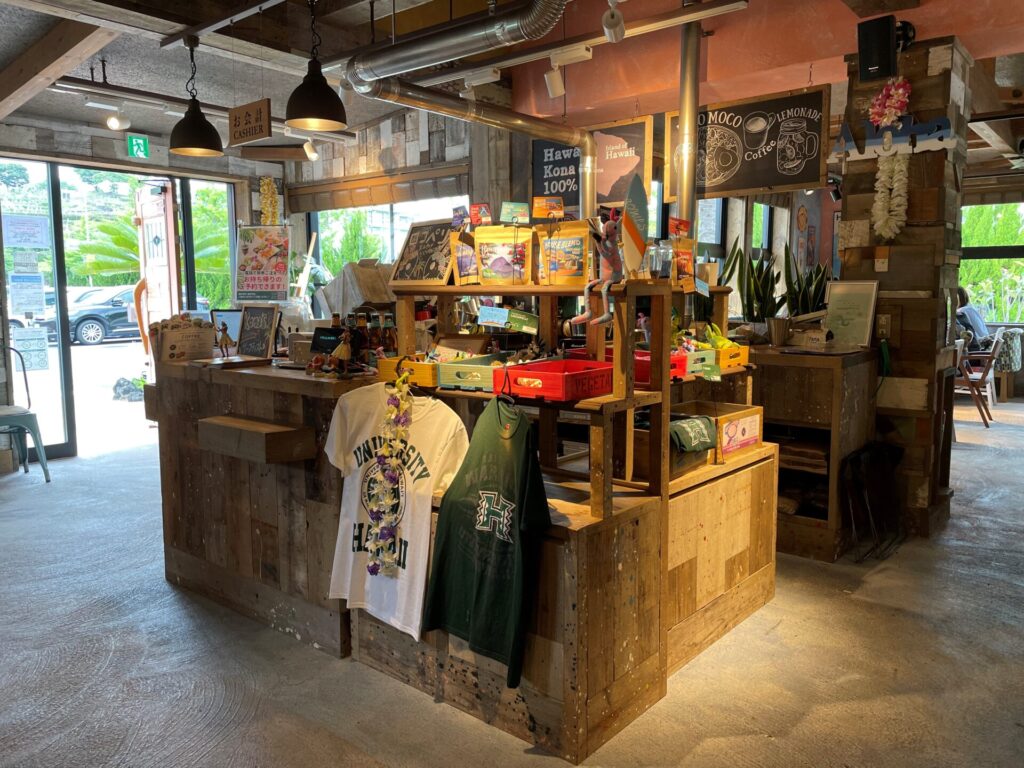
Photo Credit: Jenna Kaita
I hope you all get a chance to check out Kona’s Coffee and experience Hawaii even for a brief moment right here in Japan! Hope you enjoy!
Photo Credits:
Top Photo: happyfoot on PhotoAC
All additional images taken and provided by Jenna Kaita, used with permission.
All other content (text) created by the original author and © 2023 MUSUBI by Borderlink
Top photo: Sousuke48 on PhotoAC
Welcome again to Best of MUSUBI, where we revisit articles from the past and breath new life into them with updated information and photos!
Every year, Christmas is celebrated the world over, but how about in Japan? It may come as a surprise to many, but it’s not considered a national holiday here. In some parts of the country, students will be going to school on December 25th for their final day before winter break starts. Businesses will be open as usual. Life goes on with Christmas in the background; it’s New Year’s Eve next week that it finally stops for. But even if it isn’t a day off for most, Christmas is still something of a big deal. Here are 3 holiday traditions of Christmas in Japan!
Christmas Cake
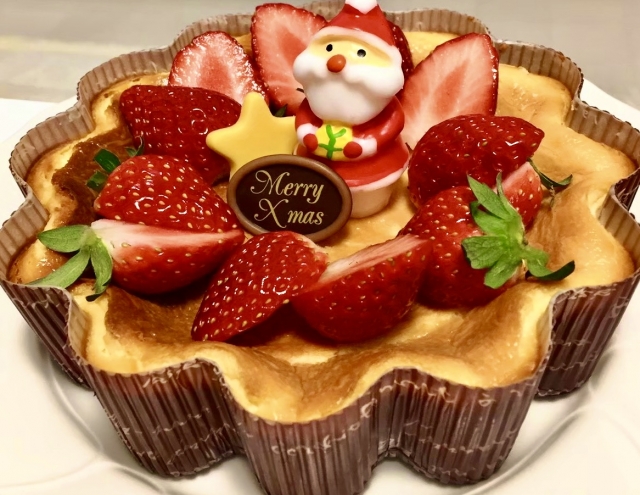
Photo by ayapipi
The traditional Japanese Christmas dessert isn’t cookies or gingerbread, but Christmas cake(クリスマスケーキ). However, it’s also not the kind of fruitcake that’s typically eaten in European and American countries during Christmastime either.
Japanese Christmas cake is typically a sponge cake-based strawberry shortcake, and much closer in size and texture to a traditional birthday cake. While white cream and strawberry Christmas cake is the most popular variety, you can find cakes of various types and flavors. Some variations include chocolate, various fruits, hazelnut, and ice cream.
Japanese Christmas cakes are often decorated with fruits or chocolate, sugar Santas, and other Christmas-themed edible ornaments. The Christmas cake tradition in Japan dates back to 1922, but truly started catching on in the 1970’s, around the time our next tradition also began…
Fried Chicken
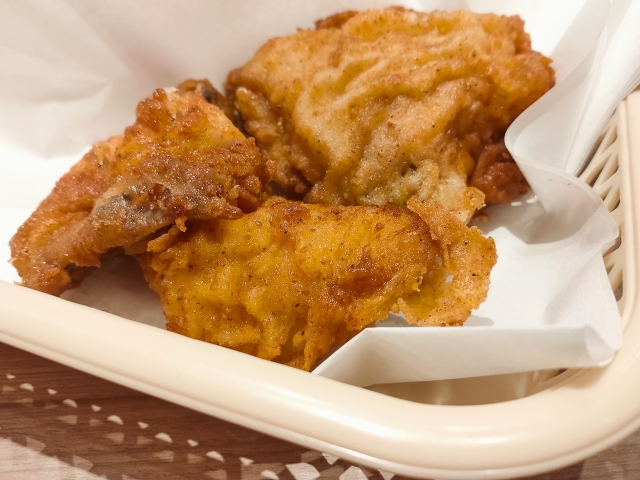
Photo by 胡麻油
The traditional Christmas dinner in Japan is fried chicken. That’s just an accepted fact at this point, but why is that the case? There is actually a logical explanation for it, in a Dickensian fast food sort of way.
According to legend, Takeshi Okawara, the manager of Japan’s first KFC, woke up one night and wrote down an idea that came to him in a dream: sell a “party barrel” of chicken during Christmas time. Okawara was purportedly inspired after overhearing foreign patrons remark how they missed having turkey at Christmas, and around midnight that evening, suddenly decided a fried chicken dinner in a barrel might fill that gap.
Following a marketing push in 1974 knowns as Kurisumasu ni wa Kentakkii, or “Kentucky for Christmas”, Okawara’s dream-inspired idea became an annual tradition for millions across the country. Nowadays, fried chicken is the most widely-eaten food on Christmas day, followed only by pizza.
Due to the high demand for chicken around this time of year, KFC (as well as other restaurants and convenience stores that jumped on the trend) have taken to requiring preorders, sometimes over a month in advance. If you’re looking to try the tradition yourself, it’s now quite easy to find friend chicken on Christmas eve or day due to the abundance of stores that sell it around this time. If you want the “authentic” KFC experience though, preordering is recommended.
Illumination Displays
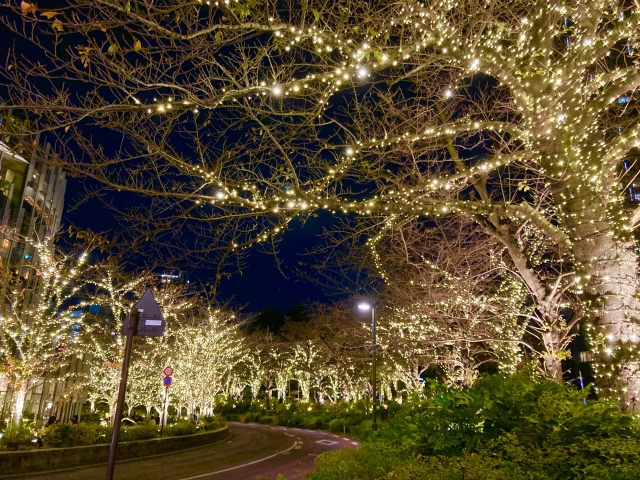
Photo by さあめ4号
While the tradition of winter illuminations in Japan developed separately from Christmas, the two are undeniably linked. Every winter, cities in Japan are full of twinkling lights. More and more, many of those illuminations will incorporate Christmas-themed imagery in them, making them inseparable from the holiday mood.
While lit-up Christmas trees at home are still a relatively novel concept, for businesses and shopping centers, displaying decorated trees with lights is almost a must-have these days.
By far the most famous and important illumination display is Kobe Luminarie, a light festival held in Kobe every year since 1995. It was first started to commemorate the Great Hanshin earthquake of that year. The event actually helped to bring tourism back to Kobe after the disaster. It annually attracts around 4 million people every year, and raises around 135 million yen in donations.
Photo Credits:
Top photo: Sousuke48 on PhotoAC
Additional photos by ayapipi , 胡麻油 and さあめ4号
All other content (text) created by the original author and © 2023 MUSUBI by Borderlink
It’s common knowledge that Tokyo is one of the most expensive cities in the world. As someone who was born and raised in a third-world country, it can be very intimidating to start a life in Tokyo. I’ll be giving these tips, so you won’t have to make the same mistakes I did!
Accomodations
If you just moved into Japan with a tight budget then you have very limited options on where to live. But it doesn’t have to be uncomfortable! Now, let’s cross out apartments and mansion out of the picture. Living in a fully furnished apartment/room in Tokyo would cost 90-120yen/month on average with gas, electricity, and water excluded! Not to mention the key money, deposit, and all the other fees you have to pay upon moving in!
My first tip is to find a sharehouse! The average cost for three months in a sharehouse is around 120,000-150,000 yen including utilities and most of the time, initial fee! No need to pay for key money too! Share houses also usually provide everything; washing machine, rice cooker, stove, cooking utensils, fridge, etc. Plus it’s easy to contact share house companies from overseas!
Transportation
Depending on your purpose of coming here, my second tip would be to look through google maps and the place(s) you would most probably frequent to. Having to ride the train on a daily basis can cut an amount from your budget. Now try to calculate the fare back and forth and see how much it would cost per month. Then get an IC card (pasmo/suica) at any station. Look for the ticket machine that has a Commuter Pass (Teiki). The teikiken basically offers a discount between your home station and the station where your work or school is. You pay in advance for a certain period of time, from a month, three months to six months, and you can use the pass an unlimited number of times between the two stations during that time! You can definitely save up to 10,000-15,000 yen a month with a teikiken!
Food/Groceries
Find the supermarket where most of the locals go! Gyoumu Super, OK, Niku No Hanamasa are the places you should go to for cheap groceries. The first time I went to GS, I slapped myself for going to other stores or konbinis while I had these around the station! Fruits, vegetables, frozen goods and spices options are so much cheaper at these grocery stores! And if you’re looking for cheap meats, then I also recommend going to Jump! It’s a meat shop where you can even buy kuroge wagyu at a very reasonable price.
Clothes
You’d be surprised to see how fashionable people are in Japan, especially in Tokyo! If you don’t want to be judged, they say try no to stand out. You see, this is tricky. When I first came here, I was amazed that everyone dresses modestly! They all look so well-dressed! They all stood out to me. So I guess when they say try not to stand out, it means try not to look unappealing. But worry not, I know just where to find the good clothes without having to spend too much!
As much as I want to gate-keep these areas, your options would be Koenji and Kichijouji! These places are my ultimate favorites in Tokyo! They have a lot of thrift stores just around the station and these areas are also less crowded than Shimokitazawa. Try to find a nearby Modeoff and 2nd Street too. You can buy clothes here for as low as 300-500 yen! I remember being asked multiple times at my language school about where I buy my clothes and I recommended these places. Thank me later! And keep in mind that Japan has four seasons so it’s best to shop in these places before the next season comes as the prices are usually cheaper.
Conclusion
I hope you find these tips helpful! And of course, my best and last tip would be to learn the language! I hope you enjoy life in Tokyo! I still have a lot of places I have yet to explore myself, but for now, these tips are what got me through my first year in Tokyo. Dear reader, if you’ve made it this far, 頑張ってください!
Photo Credits:
All other content (text) created by the original author and © 2023 MUSUBI by Borderlink
Top photo: ShineLight on PhotoAC
Winter in Japan brings not only snowy landscapes and picturesque scenes but also a delightful array of seasonal foods that warm the body and soul. Japanese cuisine during the colder months is a rich tapestry of comforting dishes that showcase the country’s culinary ingenuity. From hearty soups and hot pots to sweet treats, Japanese winter food reflects the cultural significance of nourishment and the changing seasons. In this article, we’ll explore some of the most beloved and traditional Japanese foods enjoyed during the winter season.
1. Nabe: The Heartwarming Hot Pot
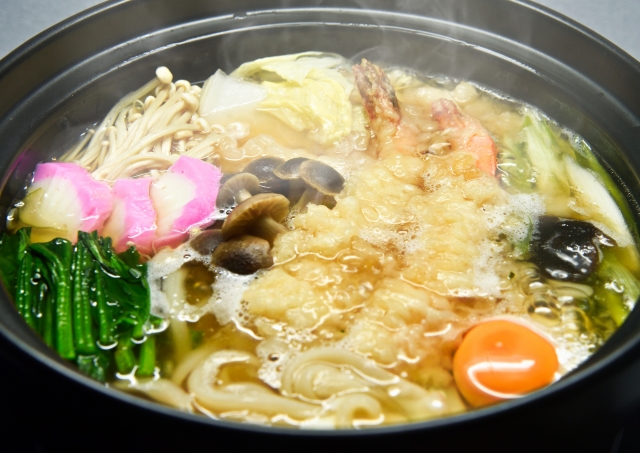
Photo by Cham-Qutan
Nabe, a Japanese hot pot dish, is the quintessential winter comfort food. It’s a communal meal where family and friends gather around a simmering pot of broth and cook an assortment of ingredients. Popular nabe variations include sukiyaki, shabu-shabu, and yudofu. Sukiyaki typically features thinly sliced beef, tofu, vegetables, and noodles cooked in a sweet soy-based broth. Shabu-shabu, on the other hand, features paper-thin slices of meat, like pork or beef, and a variety of vegetables cooked in a clear, savory broth. Yudofu is a simpler, tofu-centric nabe that’s perfect for those seeking a lighter option.
2. Oden: The Street Food Classic
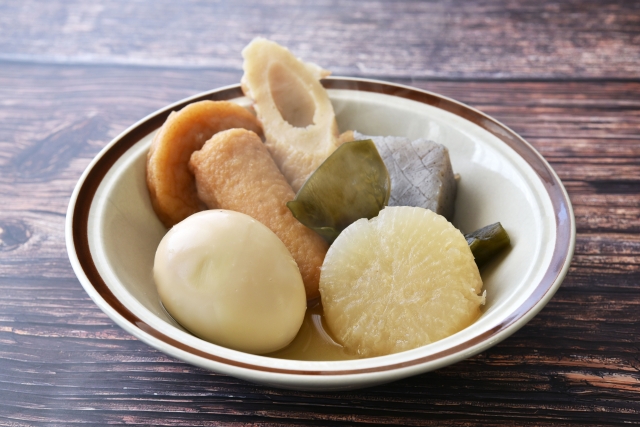
Photo by CORO-photo
Oden is a beloved Japanese street food that warms the hearts of many during the winter season. This one-pot dish consists of various ingredients such as boiled eggs, daikon radish, fish cakes, and konnyaku (a starchy jelly) simmered in a soy-flavored broth. The result is a warm and satisfying medley of flavors and textures. Oden is often enjoyed at cozy street stalls and convenience stores, and each region of Japan may have its own unique twist on this classic.
3. Yaki Imo: Roasted Sweet Potatoes
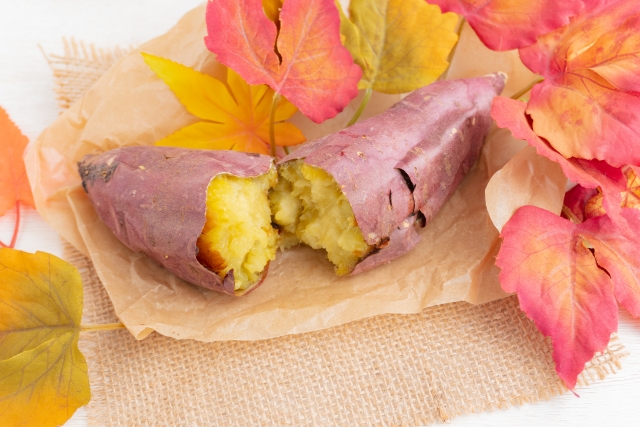
Photo by ぴぴふぉと
Yaki Imo, or roasted sweet potatoes, are a simple yet cherished winter treat in Japan. Street vendors often roast these sweet gems in a wood-burning cart, infusing them with a delightful smoky flavor. The warm, slightly caramelized flesh of the sweet potato provides a natural source of comfort and warmth on chilly days. Yaki Imo are not only a tasty snack but also a nostalgic reminder of childhood winters.
4. Zenzai: A Sweet Ending
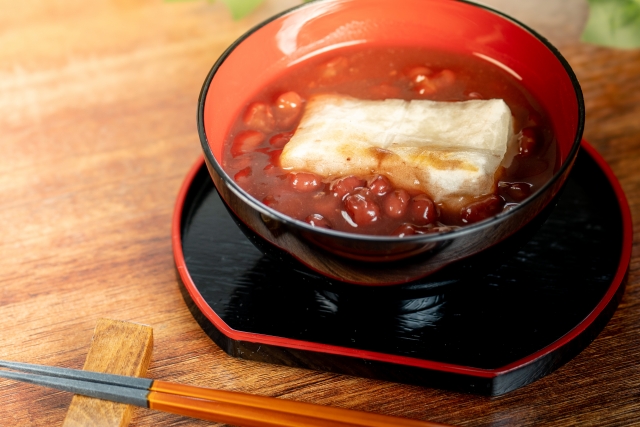
Photo by ラテすけ
To round off a satisfying winter meal, nothing beats a bowl of zenzai. Zenzai is a sweet red bean soup served with mochi, a chewy rice cake. This dessert is a classic choice during the colder months and is often enjoyed in teahouses or as a homemade treat. Zenzai’s sweet, velvety texture and mochi’s comforting chewiness create the perfect balance of flavors and textures, making it a delightful way to end a winter feast.
5. Osechi Ryori: New Year’s Delicacies
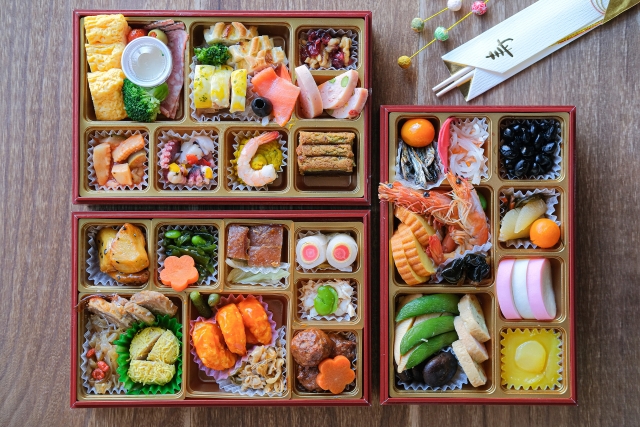
Photo by choco❁⃘*.゚
While not exclusive to winter, Osechi Ryori is a collection of traditional Japanese dishes prepared to celebrate the New Year. The colorful assortment of dishes is carefully arranged in layered boxes, known as jubako. These dishes include a variety of items like kamaboko (fish cake), kuromame (sweet black soybeans), and datemaki (sweet omelet roll). Osechi Ryori showcases the importance of symbolism and auspicious flavors in Japanese cuisine, and it’s a delightful way to welcome the new year in style.
Japanese cuisine during the winter season is a testament to the country’s culinary diversity and deep cultural connections to nature and the changing seasons. From heartwarming nabe and oden to the simple pleasure of roasted sweet potatoes and sweet zenzai, these dishes offer a taste of comfort and nostalgia that warms both the body and the soul. So, if you ever find yourself in Japan during the winter months, make sure to savor these traditional dishes for a truly authentic experience of Japanese culture.
Where to enjoy Winter Foods
Here are some excellent places in Japan where you can enjoy the mentioned winter dishes:
1. Sukiyabashi Jiro (すきやばし次郎), Tokyo:
If you’re looking for exceptional sushi and sukiyaki, Sukiyabashi Jiro is a world-renowned sushi restaurant. Located in Tokyo, it’s a must-visit for those seeking an unforgettable culinary experience during winter.
2. Yayoiken (やよい軒), Nationwide:
Yayoiken is a popular chain restaurant in Japan that serves a variety of Japanese dishes, including nabe and oden. You can find Yayoiken branches throughout the country, making it a convenient option for trying these traditional winter foods.
3. Yaki Imo Carts, Various Locations:
To enjoy delicious roasted sweet potatoes (yaki imo), look for street vendors selling them from carts or trucks, especially in the colder months. In many cities and towns, you’ll find these vendors offering warm yaki imo on the streets.
4. Traditional Teahouses, Kyoto:
For a bowl of zenzai, Kyoto is a fantastic destination. The city is known for its traditional teahouses, where you can savor a wide range of Japanese sweets, including zenzai.
5. New Year’s Festivals, Various Locations:
Osechi Ryori, the traditional New Year’s delicacies, are often available at special events and festivals throughout Japan during the holiday season. Visiting these festivals is a great way to experience these symbolic dishes.
While these are just a few suggestions, remember that Japan is filled with countless local restaurants and eateries that offer these winter delights. Exploring the local food scene can be an adventure in itself, as you may stumble upon hidden gems and family-owned establishments that serve some of the best Japanese winter dishes.
Top photo: ShineLight on PhotoAC
Additional Photos by Cham-Qutan, CORO-photo , ぴぴふぉと , ラテすけ and choco❁⃘*.゚
All other content (text) created by the original author and © 2023 MUSUBI by Borderlink
